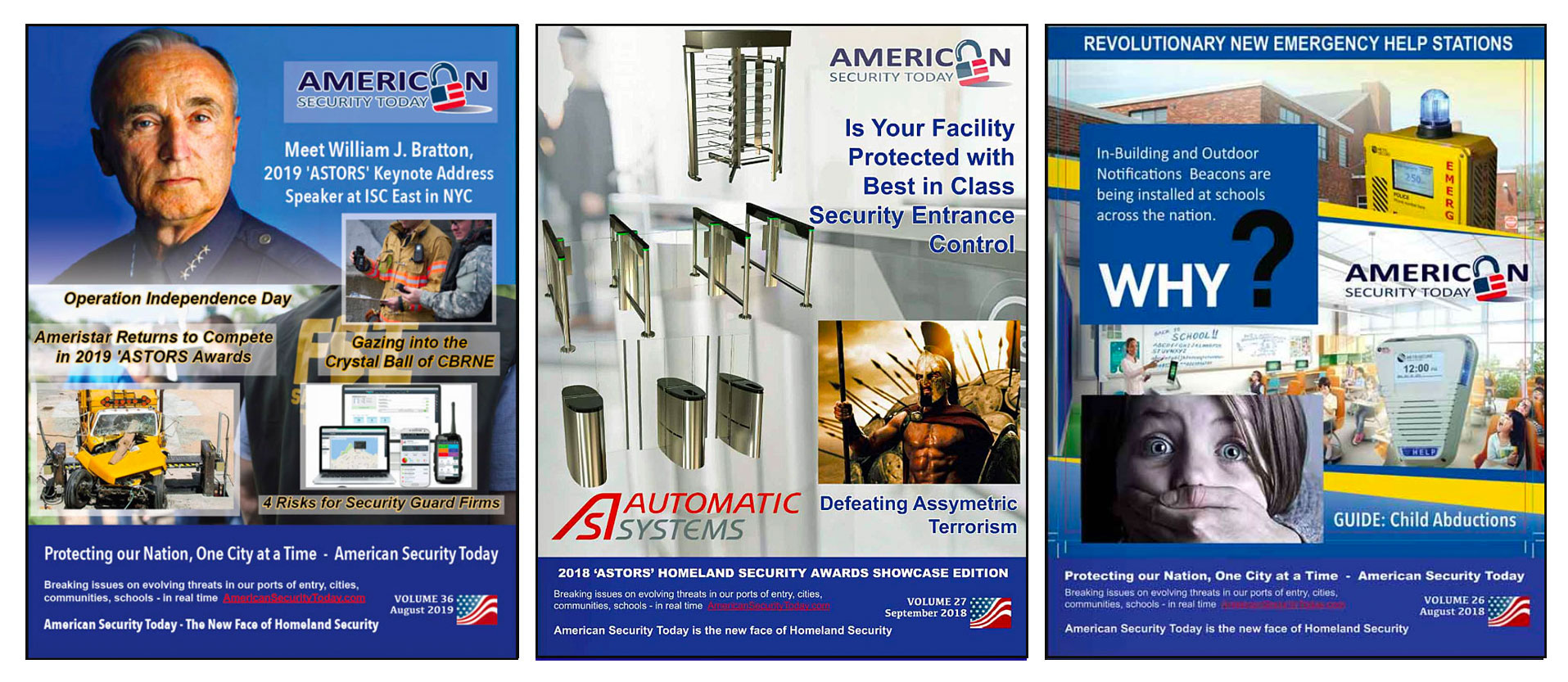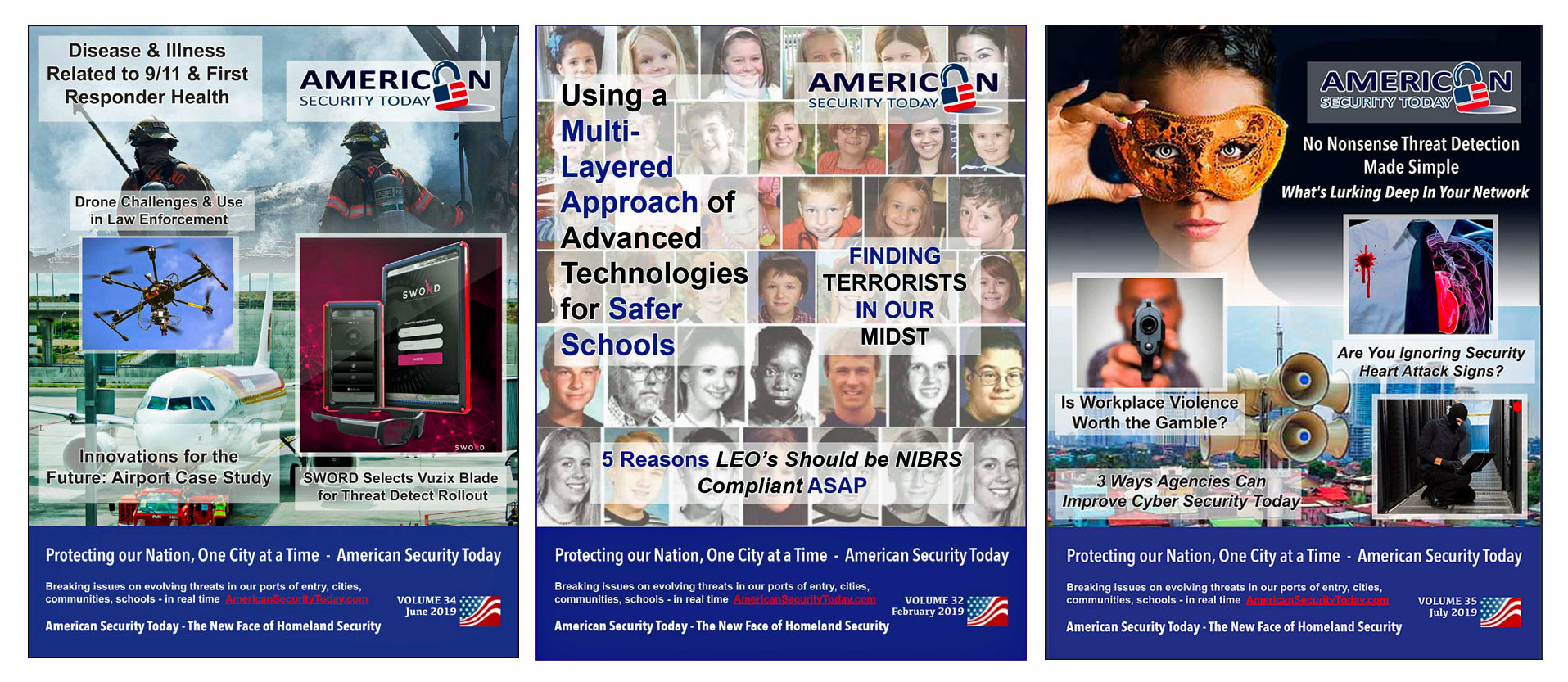
Guest Editorial by Mike McGovern, Regional Sales Manager at Automatic Systems America
Authentication technologies for access control are ever-changing.
Speed, security – and now health concerns such as COVID-19 – are raising new challenges for the industry.
We wondered, “what are some of the potential answers to current/future challenges presented for supply and integration of new authentication technologies”.
It seems that a good summary of the latest and greatest in these technologies would be useful.
So we set out to investigate the current and future trends in authentication/credentialing, with focus on the following:
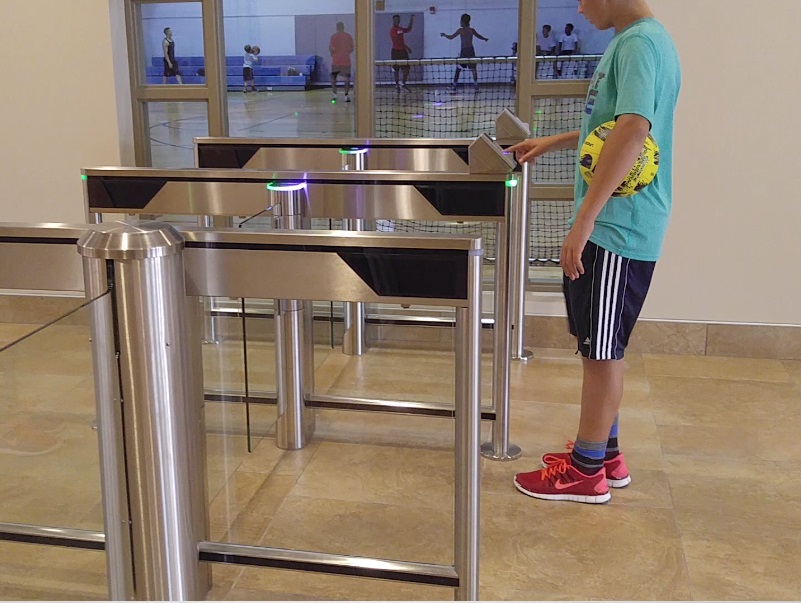
-
What are the currently available technologies that will give us more secure, safe, healthy access to buildings and campuses?
-
Are their future additional technologies on the horizon that we should be watching, for their potential benefits given our current security design needs and health concerns?
-
What are some of the leading security experts/designers and end users saying about current and future trends?
-
Can biometrics manufacturers give us a peak into what they see as the future of access control authentication and credentialing technologies?
So we wanted to learn more about currently available authentication technologies, others that are in development, and trends in the industry.
We talked with leading industry experts who have direct knowledge of the products – both currently in use and in development – that will address the ever-changing needs for authentication, as well as the new hygiene challenges highlighted by the global COVID-19 crisis.
Even pre-dating the current virus/hygiene concerns, there were many options for controlling access to facilities and secure campuses, using a variety of access control and authentication technologies.
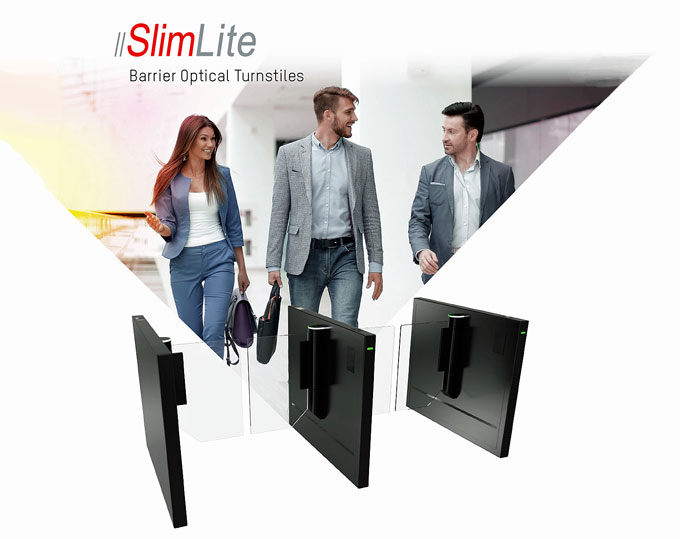
Turnstiles, portals, optical security lanes, access controlled doors, perimeter security fence gates, vehicle gates, full height turnstiles all may have credentialing technology in place.
There never has been a one-size fits all, cookie cutter approach to access control for all of these situations.
Needs, preferences, and demands will vary, that is why we have available to us such a wide variety of access control systems, features and authentication technologies from a variety of manufacturers.
The security technology changes and enhancements could be the topic of many pages and chapters, but here in this article we instead focus on one very specific segment which is expanding, growing, and getting increased attention lately due to certain trends (speed, security) and current events (virus and related health concerns):
Authentication (credentialing) technologies.
Focusing on these authentication technologies in particular, we can look closely and see some dramatic changes even over the past 10 years, and even in recent months.
There are historically many types of authentication devices (readers) and media (cards, for example).
This category includes traditional linear barcode and swipe cards, proximity cards, biometrics, mobile credentials, QR Codes, smart cards, multi-technology readers and other emerging access control technologies.
But we know that the traffic throughput when using swipe cards, prox cards, barcodes and even smartphone credentials (bluetooth, wireless, NFC, Qscan) – while having significant benefits over access cards – still has some room for improvement.
(SmartPhone (Bluetooth, BLE, wifi and NFC) readers are more convenient and hygienic than some “touch” biometric readers and many card readers. No touching is required. Most patrons have their phones handy rather than searching for access cards. Visitor credentials can be issued with automatic expirations in place. Generally a more convenient and preferred method to standard access card readers and palm/fingerprint readers. SlimLanes are a superior swing glass optical turnstile by Automatic Systems, ca.automatic-systems.com. Courtesy of Mike McGowan and YouTube.)
Think about the daily morning rush hour through a customer’s lobby, as each person passes through a swing glass optical turnstile or security portal as they report in to work.
When using any one of these devices/credentials, the user must locate the card – and pull the card out of one’s pocket or wallet – then place it up against a reader.
Throughput is affected. Access cards (and even possibly smartphones) can be stolen by or loaned out to an unauthorized person.
This can be a serious security concern.
Add to these issues another factor: Health concerns, which are becoming more important in our post COVID-19 world.
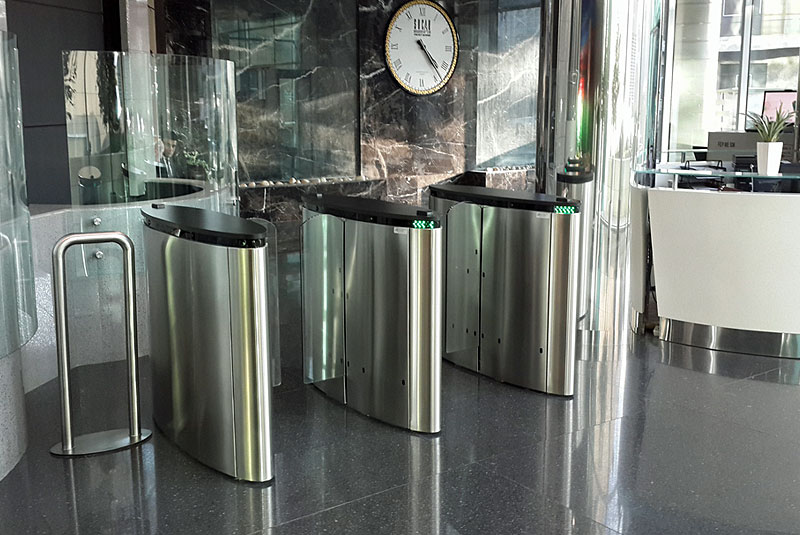 Consider how closely (‘touching” in many cases) our card/media must come to the reader that has been used by many other persons.
Consider how closely (‘touching” in many cases) our card/media must come to the reader that has been used by many other persons.
Once viewed as the future of access control, many traditional biometric “Touch” readers (ie.; fingerprint, palm reader, hand geometry/vascular readers) sometimes require even more direct contact than traditional access cards.
There are valid health concerns for the risks associated with all of the legacy authentication types.
It seems that a number of new technologies are now available that ease or reduce most of the above mentioned throughput, security and health concerns.
Think of the facial recognition, iris scan, and hand wave readers currently offered in the market.
(Automatic Systems’ SlimLane optical turnstiles are shown integrated with the Idemia Morpho Handwave biometric reader. This is a fast, high throughput, secure, and hygiene oriented solution to pedestrian access and entrance control. The legacy of COVID-19 causes all security and facility professionals to look for better credential control, authorization readers, and entrance control solutions. This technology will be considered for its advantages over typical card readers and fingerprint biometrics. Courtesy of Mike McGowan and YouTube.)
Speed is improved (especially in the case of facial or hand-wave) by the reduced need to pause and produce a card.
Security is enhanced in that the credentials cannot be borrowed or stolen.
And most importantly in today’s world, no-touching means reduced chance of transmitting viruses.
So what can we learn from industry professionals who have studied these new trends?
We talked with 2 leading security design consultants/engineers and a major end user to get their vision for the future of these technologies.
Jonathon Harris, Senior Consultant at Guidepost Solutions observes that “…new designs are focussing on wider adoption of mobile access across other areas of day-to-day life and the broader use of non-badge related credentials for large end-users. Customers are demanding faster, touchless solutions…”.

Jonathon draws on 20 years’ experience and observes that “Large global companies are implementing non-traditional credentialing methods like this, and focussing in on total cost of ownership rather than just product acquisition cost.”
He sees a need for “…deeper evaluation of ‘touchless/frictionless’ credential technology.”
“We are moving from a niche area and fringe nice-to-have, to a sought after and strategic investment for organizations.”
“Add to this trend the need for clients to have a better understanding of where people have moved/accessed within a secure facility; possibly through passive credential scanning or other methods like video.”
Another recognized consulting/design expert, Frank Scala, is Senior Lead – Security Practice at WSP Engineering.

After designing access control for more than 20 years with all types of authentication technologies, he points out that “BLE (Blue Tooth Low Energy), Biometrics and facial recognition will soon become the standard for all credentialing”.
He further observes that “facial recognition, as it becomes perfected, will likely gain wider acceptance in the near future.”
Frank Scala also offered the unique perspective that “card media will improve as enhancements in the metals and plastics will evolve to be anti-viral and ant-bacterial resistant”.
(Facial Recognition can be a superior credentialing system for doors, entry points, and optical turnstiles, when compared with traditional access card readers, fingerprint biometrics. The recent COVID-19 pandemic raises concerns about hygiene such that any card access or “touch” biometrics will be eventually considered for replacement by facial recognition and other touchless biometric systems. Biometrics like this can be faster, more secure, and certainly more hygienic when used with a swing glass or retracting glass optical turnstile or a pedestrian security portal. Courtesy of Mike McGowan and YouTube.)
One large national end user who has employed hand-wave and fingerprint technology, as well as conventional card readers gave us some insight into their thought process, which they have now recently adjusted due to virus and hygiene concerns.
This client employs thousands of readers across their security entrances and access control doors.
The high-profile customer had recently designed a system using hand-wave readers at their security optical turnstiles for speed and throughput, and at the same time had specified fingerprint readers at several hundred doors, at their new corporate campus.
But more recently, the end user is now considering a major change to their credentialing devices specifications due to the hygiene concerns recently raised due to COVID-19.
An internal study is currently underway to change all access control devices to “contactless”, either hand-wave or possibly BLE Bluetooth.
To gain further insight, we talked with several manufacturers of credentialing devices to learn more about the trends that they see coming, and how they are addressing product features to meet the current and future needs of their clients.

Larry Reed, CEO of ZKTECO USA (a biometrics manufacturer) said that “fever detection technology” is already being employed in new biometrics readers.
Facial detection and fever detection can be employed in the same reader.
The thought process is to both authenticate the user and screen the user for possible fever at the same time.
Any persons who do not authenticate or who may have a fever, will be denied entry subject to further screening by security or health personnel.
Larry’s viewpoint is that security decision makers must embrace change and accept the new reality that focuses on long term cost, not purchase price.

According to Ephram Yeashoua, CEO of iDentyTech (another biometric solutions provider), discussed the legal issues surrounding biometric reader: “…biometric platforms must and do typically conform to all government regulation guidelines for biometric data storage by providing a wide range of available options to store this data”.
He went on to observe that “…there will be some transition periods as people slowly move from card access to biometric access, but all companies will start exploring their options and investing in biometric access control solutions now so they are ready for this next level of authentication security.
Due to the issues raised by the COVID-19 pandemic, we have already noticed a shift of focus from focus has shifted to facial recognition and Palm Vein reader devices, because they are multi-layer “no-touch” access control solutions.”

We also talked with Nicholas Raffin of Idemia, maker of the Morpho line of biometric devices.
He points out that, “The Corona virus pandemic has generated a huge interest for frictionless access control solutions: hand wave touchless biometric readers, and newer facial recognition systems.”
“The new ‘reflexes’ adopted during the coronavirus epidemics may remain beyond this current period.”
“These frictionless devices also essentially bring more security of course, but also more speed and convenience, making them well suited for high traffic areas like busy lobbies or factory entrances, with the additional benefit of reducing the tendency for employees to group or cue up when entering their workplace.”
What about Cost?
Of course we understand that while features and performance of any technology are drivers for product selection decisions, we cannot forget that cost is a factor as well.

Generally speaking, some of the latest biometrics technologies such as hand wave and facial recognition readers can cost up to 10 times the cost of simple card readers.
Several thousand dollars vs. several hundred dollars is a good general cost statement.
Fingerprint readers and some other contact-type biometrics might fall in between.
There is little doubt that costs will come down as the technology becomes more mature and widely accepted – but for now costs need to be acknowledged and accepted as we consider these options.
Conclusions
Standard card reader technologies continue to be a mainstay in the foreseeable future but smart phone and biometrics based authentication readers will be more common as their technology cost comes down, reliability, security and wide acceptance increases.
Smartphone based technologies are slightly more secure and marginally more healthy than card technologies in many cases.
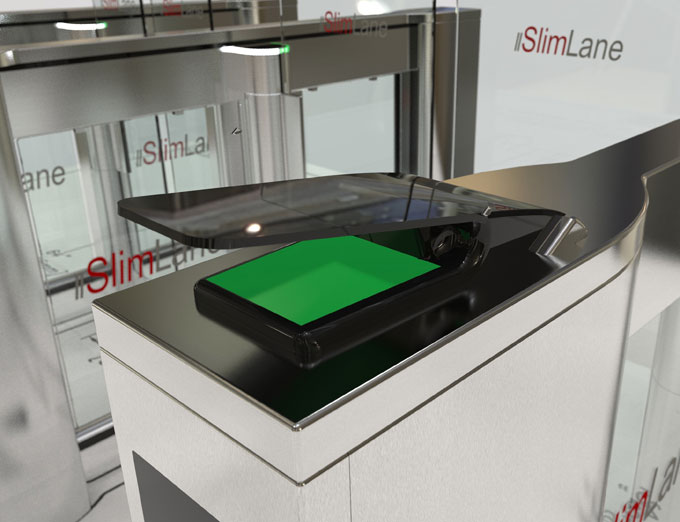
Biometric devices that require touching may lose some traction as facial type, hand geometry wave readers and other new contactless technologies gain a larger share of the work.
We are focused on these new technologies and we are watching as a number of them have installations in operation in turnstile, speedgate, portals and door access control scenarios in many high volume security oriented facilities.
We hope to report back to you at GSX 2020 – via a panel presentation in a few months – with more results as statistics and results are compiled over time.
But from our current point of view we see enormous improvements and great promise with these new authentication and screening methods.
We believe that the experience date over time will prove out that “contactless, touchless” authentication is more secure, fast, and healthy – and will be the clear way of the future.
About the Author

Mike McGovern is a security and entrance control industry veteran who has been helping develop & design integrated security strategies since 2000, including entrance control systems at many of the USA’s most iconic and recognizable buildings and campuses.
Mike is responsible for sales of vehicle entrance control products (optical turnstiles, portals, gates) in the Southern USA and New England Regions for Automatic Systems.
Automatic Systems Sponsors 2020 ‘ASTORS’ Homeland Security Awards Program
Automatic Systems, a world leader of automated physical access control equipment for pedestrian and vehicle entrances, is pleased to announce the company is a Premier Sponsor of the 2020 ‘ASTORS’ Awards Program.
Secure Control of Pedestrian Access
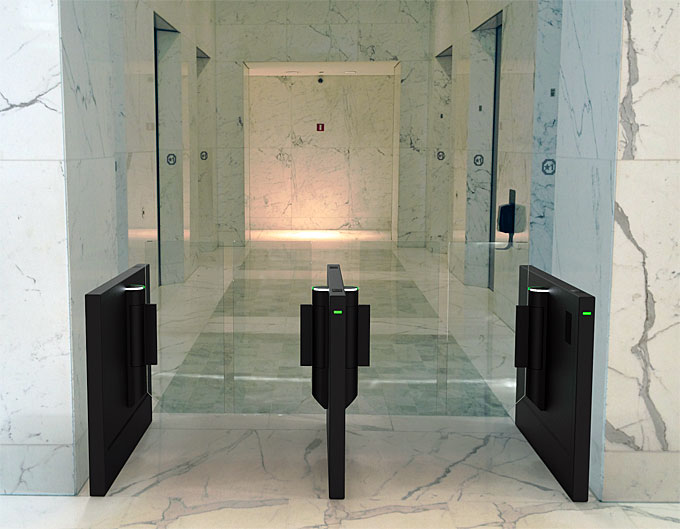
Automatic Systems competed in 2019 with the company’s new SlimLite, the newest member of the SlimLane family of swing glass optical turnstiles, designed to meet the needs of value-oriented projects.
The SlimLane family of products already features a wide variety of models geared towards various security levels, architectural designs, and site footprint requirements.
The addition of SlimLite now brings in a choice for the security designer who needs the SlimLane pedigree in a slightly “lighter” version.
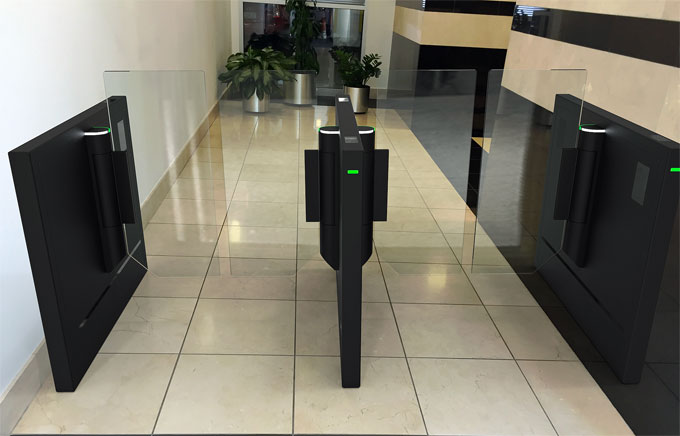
The new SlimLite will come as standard with black powder coated steel cabinet and 3/8” thick tempered swing glass obstacles, and a direct drive DC motor to offer a much greater reliability than competitors’ rod-driven systems.
SlimLite also follows the SlimLane design for superior tailgate/piggyback detection, battery back-up, mechanical security locking, as well as lighted pictograms (red/green/white).
2020 ‘ASTORS’ Homeland Security Awards

AST focuses on Homeland Security and Public Safety Breaking News, the Newest Initiatives and Hottest Technologies in Physical & IT Security, essential to meeting today’s growing security challenges.
 The 2020 ‘ASTORS’ Homeland Security Awards Program, is organized to recognize the most distinguished vendors of Physical, IT, Port Security, Law Enforcement, Border Security, First Responders, (Fire, EMT, Military, Support Services Vets, SBA, Medical Tech) as well as the Federal, State, County and Municipal Government Agencies – to acknowledge their outstanding efforts to ‘Keep our Nation Secure, One City at a Time.’
The 2020 ‘ASTORS’ Homeland Security Awards Program, is organized to recognize the most distinguished vendors of Physical, IT, Port Security, Law Enforcement, Border Security, First Responders, (Fire, EMT, Military, Support Services Vets, SBA, Medical Tech) as well as the Federal, State, County and Municipal Government Agencies – to acknowledge their outstanding efforts to ‘Keep our Nation Secure, One City at a Time.’
As an ‘ASTORS’ competitor, Data Theorem will be competing against the industry’s leading providers of Innovative Application Security Solutions.
Enter today to Compete in the 2020 ‘ASTORS’ Homeland SecurityAwards at https://americansecuritytoday.com/ast-awards/.
The Annual ‘ASTORS’ Awards Program is specifically designed to honor distinguished government and vendor solutions that deliver enhanced value, benefit and intelligence to end users in a variety of government, homeland security and public safety vertical markets.

American Security Today is pleased to announce that Deann Criswell, the NYC Emergency Management Commissioner will deliver the keynote address at the 2020 ‘ASTORS’ Awards Presentation Luncheon Banquet in New York City.The Annual ‘ASTORS’ Awards is the preeminent U.S. Homeland Security Awards Program highlighting the most cutting-edge and forward-thinking security solutions coming onto the market today, to ensure our readers have the information they need to stay ahead of the competition, and keep our Nation safe – one facility, street, and city at a time.
Nominations are now being accepted for the 2020 ‘ASTORS’ Homeland Security Awards at https://americansecuritytoday.com/ast-awards/.
Comprehensive List of Categories Include:
| Access Control/ Identification | Personal/Protective Equipment | Law Enforcement Counter Terrorism |
| Perimeter Barrier/ Deterrent System | Interagency Interdiction Operation | Cloud Computing/Storage Solution |
| Facial/IRIS Recognition | Body Worn Video Product | Cyber Security |
| Video Surveillance/VMS | Mobile Technology | Anti-Malware |
| Audio Analytics | Disaster Preparedness | ID Management |
| Thermal/Infrared Camera | Mass Notification System | Fire & Safety |
| Metal/Weapon Detection | Rescue Operations | Critical Infrastructure |
| License Plate Recognition | Detection Products | And Many Others! |
Don’t see a Direct Hit for your Product, Agency or Organization?

With the unprecedented occurrence of the COVID-19 pandemic, the focus of the safety and security industries has realized the need to increase innovations to address the daily growing challenges.
As such AST aims to make sure these firms and professionals are reflected in the 2020 ‘ASTORS’ Awards Program, so we’d like to encourage you to submit appropriate categories recommendations and include COVID-19 Frontline Professionals in your Nominations to see that these Professionals, Facilities, and Vendors receive the Recognition they Deserve!
Submit your category recommendation for consideration to Michael Madsen, AST Publisher at: mmadsen@americansecuritytoday.com.
The 2019 ‘ASTORS’ Awards Program surpassed expectations with a record number of nominations received from industry leaders and government agencies, and drew over 200 attendees to the ‘ASTORS’ Awards Presentation Banquet – an exclusive gourmet luncheon and networking opportunity which filled to capacity, before having to turn away late registrants.

Why the ‘ASTORS’ Homeland Security Awards Program?
Commissioner Bratton, one of the world’s most respected and trusted experts on risk and security issues and Executive Chairman of Teneo Risk a global advisory firm, was recognized as the ‘2019 ‘ASTORS’ Person of the Year’ for his Lifetime of Dedication and Extraordinary Leadership in Homeland Security and Public Safety.The event featured an impassioned and compelling keynote address by William J. Bratton, former police commissioner of the New York Police Department (NYPD) twice, the Boston Police Department (BPD), and former chief of the Los Angeles Police Department (LAPD), as he walked attendees through 50 years of American policing history, the impacts on the communities, and the evolution of critical communication capabilities in our post 9/11 landscape.

American Security Today’s comprehensive Annual Homeland Security Awards Program is organized to recognize the most distinguished vendors of physical, IT, port security, law enforcement, and first responders, in acknowledgment of their outstanding efforts to ‘Keep our Nation Secure, One City at a Time.’
Over 200 distinguished guests representing Federal, State and Local Governments, and Industry Leading Corporate Firms, gathered from across North America, Europe and the Middle East to be honored among their peers in their respective fields which included:
- The Drug Enforcement Administration (DEA)
- National Center for Missing and Exploited Children (NCMEC)
- United States Marine Corps
- The Federal Protective Service (FPS)
- Argonne National Laboratory (ANL)
- United States Postal Inspection Service
- DHS S&T
- United States Marshals Service (USMS)
- The Port Authority of New York & New Jersey Police (PAPD)
- The Department of Justice (DOJ)
- The New York State Division of Homeland Security & Emergency Services (NYS DHSES)
- United States Border Patrol
- AlertMedia, Ameristar Perimeter Security, Attivo Networks, Automatic Systems, Bellevue University, BriefCam, Canon U.S.A., CornellCookson, Drone Aviation, FLIR Systems, Hanwha Techwin, HID Global, IPVideo Corp., Konica Minolta Business Solutions, LenelS2, ManTech, Regroup Mass Notifications, SafeLogic, SolarWinds, Senstar, ShotSpotter, Smiths Detection, TCOM LP, Trackforce, Verint, and More!
Why American Security Today?
The traditional security marketplace has long been covered by a host of publications putting forward the old school basics to what is Today – a fast changing security landscape.
The traditional security marketplace has long been covered by a host of publications putting forward the old school basics to what is Today – a fast changing security landscape.
American Security Today is uniquely focused on the broader Homeland Security & Public Safety marketplace with over 75,000 readers at the Federal, State and local levels of government as well as firms allied to government.
American Security Today brings forward a fresh compelling look and read with our customized digital publications that hold readers eyes throughout the story with cutting edge editorial that provides solutions to their challenges.
Harness the Power of the Web – with our 100% Mobile Friendly Publications

The AST Digital Publications is distributed to over 75,000 qualified government and homeland security professionals in federal, state and local levels.
‘PROTECTING OUR NATION, ONE CITY AT A TIME’
AST Reaches both Private & Public Experts, essential to meeting these new challenges.
Today’s new generation of public safety and security experts need real-time knowledge to deal with domestic and international terrorism, lone wolf attacks, unprecedented urban violence, shifts in society, culture and media bias – making it increasingly difficult for Homeland Security, Law Enforcement, First Responders, Military and Private Security Professionals to implement coordinated security measures to ensure national security and improve public safety.
These experts are from Government at the federal, state and local level as well as from private firms allied to government.
AST provides a full plate of topics in our AST Monthly Magazine Editions, AST Website and AST Daily News Alerts, covering 23 Vital Sectors such as Access Control, Perimeter Protection, Video Surveillance/Analytics, Airport Security, Border Security, CBRNE Detection, Border Security, Ports, Cybersecurity, Networking Security, Encryption, Law Enforcement, First Responders, Campus Security, Security Services, Corporate Facilities, and Emergency Response among others.
AST has Expanded readership into integral Critical Infrastructure audiences such as Protection of Nuclear Facilities, Water Plants & Dams, Bridges & Tunnels, and other potential targets of terrorism.
Other areas of concern include Transportation Hubs, Public Assemblies, Government Facilities, Sporting & Concert Stadiums, our Nation’s Schools & Universities, and Commercial Business Destinations – all enticing targets due to the large number of persons and resources clustered together.
To learn more about the 2019 ‘ASTORS’ Homeland Security Award Winners solutions, please go to the 2019 ‘ASTORS’ Championship Edition Fully Interactive Magazine – the Best Products of 2019 ‘A Year in Review’.
The ‘ASTORS’ Champion Edition is published annually and includes a review of the ‘ASTORS’ Award Winning products and programs, highlighting key details on many of the winning firms products and services, includes video interviews and more.
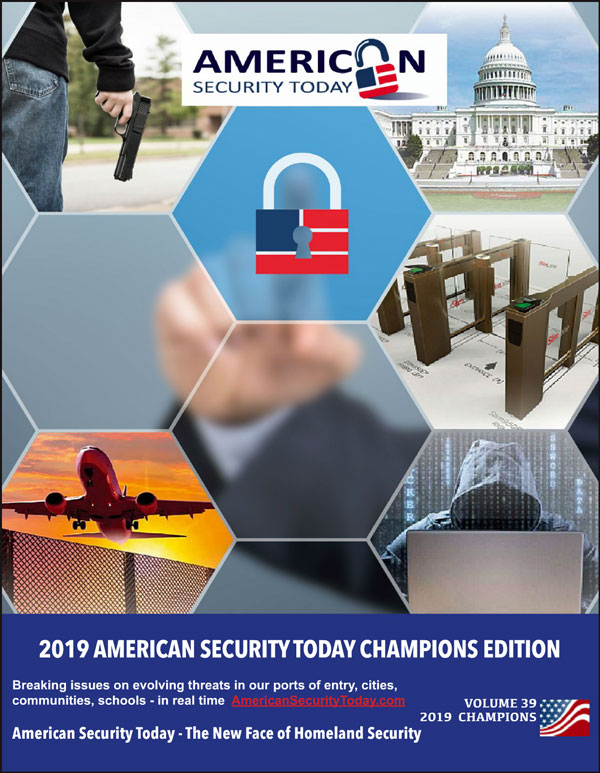 It is your Go-To source throughout the year for ‘The Best of 2019 Products and Services‘ endorsed by American Security Today, and can satisfy your agency’s and organization’s most pressing Homeland Security and Public Safety needs.
It is your Go-To source throughout the year for ‘The Best of 2019 Products and Services‘ endorsed by American Security Today, and can satisfy your agency’s and organization’s most pressing Homeland Security and Public Safety needs.
From Physical Security (Access Control, Critical Infrastructure, Perimeter Protection and Video Surveillance Cameras and Video Management Systems), to IT Security (Cybersecurity, Encryption, Data Storage, Anti-Malware and Networking Security – Just to name a few), the 2019 ‘ASTORS’ CHAMPIONS EDITION will have what you need to Detect, Delay, Respond to, and Mitgate today’s real-time threats in our constantly evolving security landscape.
It also includes featured guest editorial pieces from some of the security industry’s most respected leaders, and recognized firms in the 2019 ‘ASTORS’ Awards Program.
Automatic Systems Takes Platinum in 2019 ‘ASTORS’ Awards Program
Automatic Systems
-
Best Pedestrian Entrance Control Solution
-
SlimLite swing glass optical turnstile
-
The New SlimLite double swing obstacle turnstile from Award-Winning Automatic Systems, offers a high bidirectional throughput while maintaining the users safe and security, and a small footprint designed to meet the needs of value-oriented projects.
-
SlimLite, the newest member of the SlimLane family of swing glass optical turnstiles, in a slightly “lighter” version which integrates seamlessly within most architectural styles.
-
*Automatic Systems is also a Returning Premier Sponsor for the Fourth Consecutive Year for the Annual ‘ASTORS’ Homeland Security Awards Program, and a Winner in their Fifth Annual ‘ASTORS’ Awards Program.
(Learn More about the wide variety of options available in thee SlimLane family of swing glass optical turnstiles. Courtesy of Automatic Systems and YouTube.)
Visit Automatic Systems to take advantage of their industrial experience spanning close to 50 years, in designing and manufacturing access control equipment for secure access (building access, boarding control, immigration control, etc.), and more at https://ca.automatic-systems.com/.
For information about advertising opportunities with American Security Today, please contact Michael Madsen, AST Publisher at mmadsen@americansecuritytoday.com.
AST strives to meet a 3 STAR trustworthiness rating, based on the following criteria:
- Provides named sources
- Reported by more than one notable outlet
- Includes supporting video, direct statements, or photos















